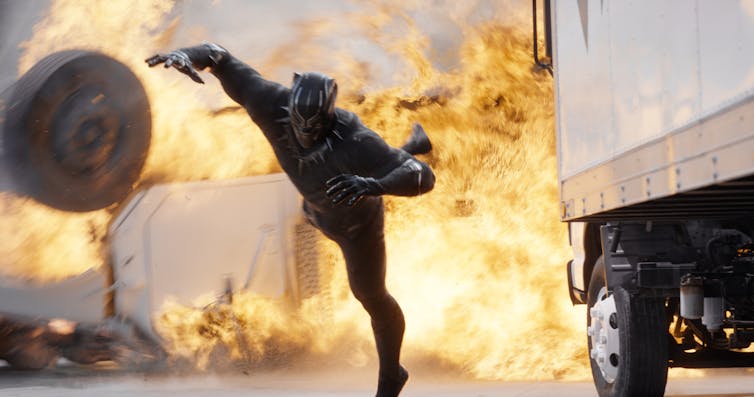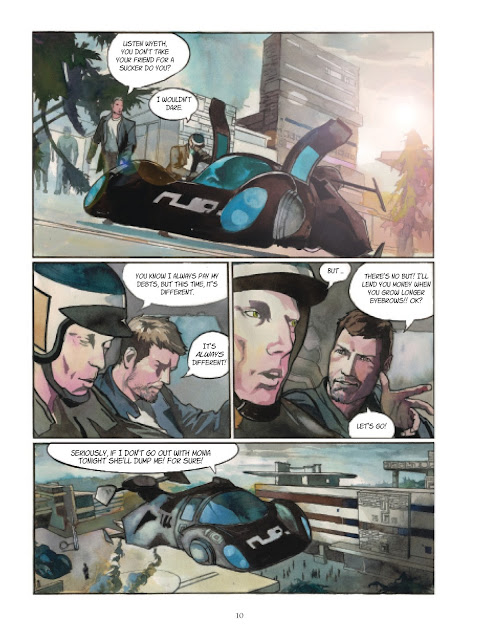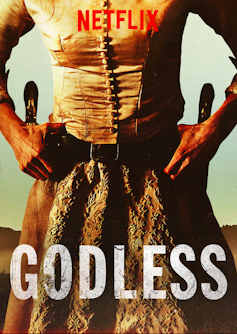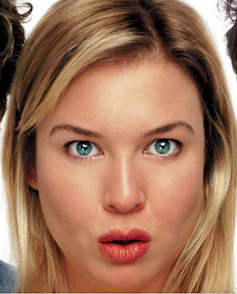
Black Panther looks to be another hit for Marvel. The film has been highly anticipated, not least because it is a milestone in cinema with a black lead superhero starring alongside a majority black cast.
The film tells the story of T'Challa, who grapples with his new role as king of the technologically advanced, fictional African nation of Wakanda. He also happens to be a badass warrior who runs around in a bulletproof catsuit with retractable claws.
Humans with the heightened senses and enhanced strength and agility of animals, have become a staple feature of the comic book genre. But what makes Black Panther different from Spiderman or Wolverine is that his abilities are not the result of genetic mutation or technological augmentation. Though his suit is advanced technology, T'Challa’s abilities come from a magical herb and his mystical connection with a Panther god.
Considering these supernatural origins, Black Panther has interesting echoes with medieval tales of humans who take on the appearance and characteristics of beasts. And just like Black Panther, in these tales, getting closer to the animal doesn’t make someone less than human – but superhuman.
These are not the usual stories of fear that the animal inside will overwhelm the human, but of humans still in control of their faculties when they become the beast.
Medieval werewolves
Surely the most famous example of humans with the skins of beasts is the werewolf. Medieval werewolves differ from later versions, as they are often sympathetic heroes rather than dangerous adversaries.
Take Melion, one of King Arthur’s knights. His transformation, with the help of an enchanted ring, is portrayed not as problematic, but as a loving gesture. Melion becomes a werewolf because he believes this will save his wife. Only in wolf form is he able to hunt down the stag she claims she must eat or she will die. The real foe in this story is the wife, as she takes her husband’s becoming a wolf as the perfect excuse to elope with another man.
Another heroic werewolf appears in the romance Guillaume de Palerne. This wolf saves the four-year-old prince Guillaume from his uncle’s plot to poison him and take the throne. The werewolf continues to take care of Guillaume well into adulthood, probably because the two have much in common. The beast is also a prince, Alfonso, whose enchantment is the result of another family struggle over the throne.
Both tales show how there remains a human inside the beast. Melion continues to think rationally and feel human emotions while in wolf form. When at court, the wolf shows civilised behaviour, even drinking wine instead of water.
Alfonso might look like a dangerous animal, but he is highly intelligent and has self-control. His civilised, human nature shines through, for instance, when he feeds Guillaume processed food like bread and wine instead of raw meat. And when Alfonso does hunt, it is a sign of his intelligence, as he gets deer skins they can use as a disguise while they are on the run.
Humans in animal skins
Melion and Alfonso have enhanced abilities, too – they are stronger, faster, and often more intelligent than humans – but the beast never takes over. Though their bodies change, their identity remains stable.
Even when the wolves threaten to lose control and act violently against humans, these acts are presented as reasonable and understandable. This is because the main victim of such violence is someone who hurt them. Alfonso growls at the stepmother who enchanted him, and Melion attacks the man his wife left him for.
We are meant to see this not as a loss of control, but the only way someone stuck in a wolf skin can let others know of their plight, since they can no longer speak. Alfonso in particular finds out that when he gestures with his paws, the humans only give him a puzzled look – an interesting comment on the limits of communication across species.
Enhanced humans?
In both tales, it is this uncharacteristic beastly behaviour that leads to the discovery that the wolves are enchanted humans, and their return to human form. But not all medieval stories end with a fairy tale like resolve where the animal becomes human again.

A case in point is Melusine, a woman cursed to turn into a half serpent once a week. After discovering her part-animal form, Melusine’s husband chooses to see his wife as a beast rather than a fellow human being, condemning her to become a serpent for all time. But as with the werewolves, Melusine remains human inside her dragon-like suit – though with the added bonus of being able to fly.
About Today's Contributor:
Lydia Zeldenrust, Associate Lecturer in Medieval Literature, University of York
This article was originally published on The Conversation.
Bonus Pictures:
 |
| Black Panther Conqueror (via DeviantArt.com) |
 |
| Black Panther (via DeviantArt.com) |
 |
| Captain America : Civil War - Black Panther (via DeviantArt.com) |


































